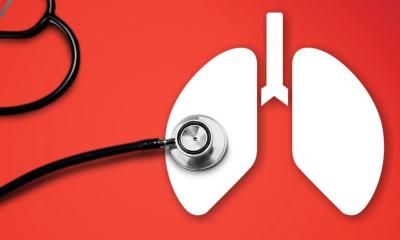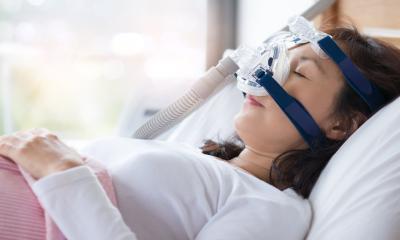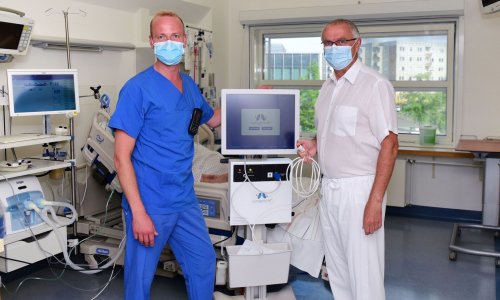Relieving breathlessness in COPD
Breathlessness, the most common symptom in patients with chronic obstructive pulmonary disease (COPD), greatly reduces their ability to participate in day-to-day activities.

Inhaled bronchodilator therapy is the first step in the management of the breathless COPD patient. By achieving sustained improvements in airway function, long-acting bronchodilators, e.g. salmeterol, can achieve superior symptom relief compared with traditional short-acting bronchodilator therapy.
The evaluation of bronchodilator efficacy has evolved considerably in recent years. New information suggests that improved breathlessness after bronchodilator therapy is principally related to reduced air trapping.
In COPD, the inability to expel air from the lungs during expiration through abnormally narrowed and collapsible airways results in air trapping and lung over-inflation. This, in turn, puts the muscles of breathing under a major mechanical disadvantage. Breathing, therefore, requires much greater effort and the patient senses this as breathlessness.
By improving airway function and lung emptying, bronchodilators reduce lung over-inflation, thereby relieving breathlessness.
A current study*, undertaken by Denis O’Donnell and colleagues at the Dept of Medicine, Queen’s University, Kingston, Ontario, Canada, examined the impact of salmeterol, a long acting bronchodilator, on breathlessness measured during a standardised task (cycle exercise) and to explore possible mechanisms of benefit.
Twenty-three symptomatic patients with advanced COPD participated in this placebo controlled, crossover study. Breathlessness, exercise performance, and various physiological measures were compared during salmeterol and placebo.
The authors found that during salmeterol therapy the intensity of breathlessness (measured by a validated scale), during a standardised physical task, fell significantly compared with placebo, and that symptom-limited exercise endurance time significantly improved by 58%.
These improvements in breathlessness and in exercise performance correlated strongly with the extent of salmeterol-induced lung deflation (i.e. inspiratory capacity increased by 18% on average). Salmeterol, by reducing lung over-inflation, also improved the patient’s ability to increase their breathing capacity to higher levels during exercise than was previously possible and to do so with substantially less breathing discomfort.
The researchers concluded that salmeterol therapy provides effective symptom relief for sufferers of COPD and enhances their ability to undertake physical activity.
Pub: European Respiratory Journal. 7/04. Vol. 24, No. 1)
01.07.2004





